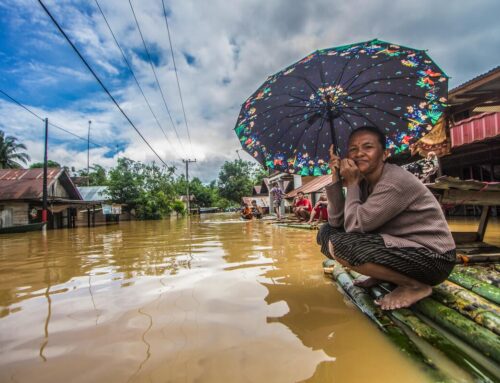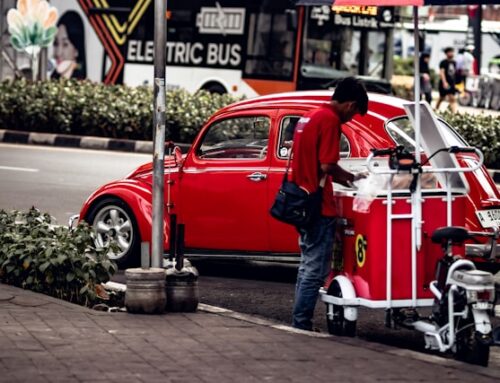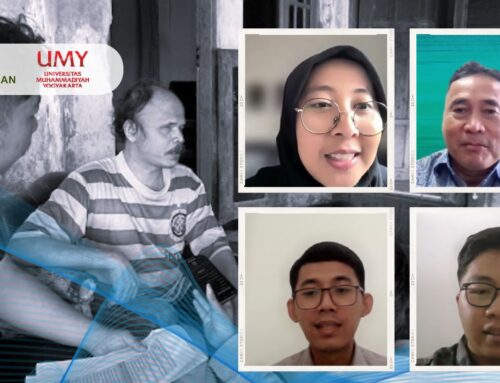This seminar will feature research on the impact of COVID-19 disruption in Indonesia which received the IRSA-BKF Paper Awards at the recent 17th Indonesia Regional Science Association (IRSA) Conference (18-19 July 2022).
Program
10.00-10.15 Remarks from BKF and IRSA, and introductions to speakers
10.15-10.35am Paper 1: Nudging people to handwash during the pandemic: the use of visual priming and saliency
Dimas Prasetyo (Nudgeplus), Lury Sofyan (Nudgeplus), Pyan Amin Muchtar (Nudgeplus and ERIA), and Dwiana Piarah (Universitas Hasanuddin)
10.35-10.50 Q&A
10.50-11.10 Paper 2: Faux progress: narrowing of gender gaps in employment during the onset of COVID-19 in Indonesia
Daniel Halim (World Bank), Sean Hambali (World Bank), and Ririn Salwa Purnamasari (World Bank)
11.10-11.25am Q&A
11.25-11.45 Paper 3. Interregional assessments of MSME credit channeling amid the pandemic: analyzing the role of the digital business environment
Militcyano Samuel Sapulette (ERIA), Nury Effendi (CEDS-Universitas Padjadjaran), Vera Intanie Dewi (FE-Universitas Parahyangan), Fitri Hastuti (CEDS-Universitas Padjadjaran), Eva Ervani (CEDS-Universitas Padjadjaran), and Anhar Fauzan Priyono (CEDS-Universitas Padjadjaran)
11.45-12.00 Q&A
Tuesday, 9 August 2022 at 10.00am-12.00pm WIB
Abstracts
Paper 1. Nudging people to handwash during the pandemic: the use of visual priming and saliency
Dimas Prasetyo (Nudgeplus), Lury Sofyan (Nudgeplus), Pyan Amin Muchtar (Nudgeplus and ERIA), and Dwiana Piarah (Universitas Hasanuddin)
The government has been asserting efforts to control the pandemic’s infection rate by making people comply with the health protocol. While these efforts aim to change people’s behavior, little attention is paid to using behavioral science as an underpinning method. The present paper aims to shed light on the influence of nudge through visual priming and saliency on handwashing behaviour. Expanding the insight found by Caris et al. (2018), in collaboration with the East Java government, we conducted two studies to identify the right visual cues that work best to increase handwashing behaviour at a government office. In Study 1, we created some posters with varying concepts and held an online survey with 1,648 participants using the convenience sampling method. We utilize a pre-post, within-subject experiment design. Participants were exposed to the posters as visual stimuli and assessed their intention to handwash and use soap before and after the stimulus exposure, which had been previously randomized. We found that visual priming of handwashing with foam and rhyming messages can lead to higher handwashing intention. It is also found that the use of a relevant messenger is not associated the with accuracy in recalling the intended message. In Study 2, we put one of the nudge posters as an intervention in a handwashing facility in a government office, along with salient footprints pasted toward the sink. We introduce four types of treatments and observed the real handwashing behavior of government officials and visitors using a hidden camera. A total of 2062 people observed during the experiment. We found that while only procuring handwashing facilities did not yield a significant change in handwashing rate, our nudges with the poster and footprints did. The present study showed that changing physical context increased the handwashing behaviour by only 1%, while subsequently adding in nudging poster and footprints raised the handwashing behaviour by 7% and 5% respectively. The effect persisted amongst the visitors but diminished amongst the employees. Our findings further contribute to the literature of behavioural intervention, specifically in promoting hygiene behaviour, to find out which environmental cues are more viable during the pandemic where impactful (but low-cost) intervention needs to be implemented to ensure society’s compliance towards health protocols.
Paper 2: Faux progress: narrowing of gender gaps in employment during the onset of COVID-19 in Indonesia
Daniel Halim (World Bank), Sean Hambali (World Bank), and Ririn Salwa Purnamasari (World Bank)
11.10-11.25am Q&A
This paper studies the impacts of the COVID-19 pandemic on Indonesia’s labor market by exploiting the exogeneous timing of the pandemic in a seasonal difference-in-differences framework. We use multiple rounds of Indonesia’s National Labor Force Survey from 2016 to 2020 to establish a pre-pandemic employment trend and then attribute any excess difference in employment outcomes from this trend as the estimated effect of the pandemic on individual employment outcomes. In contrast to empirical findings in the majority of other countries, we observe that in Indonesia the onset of the COVID-19 pandemic increases the likelihood of being employed among women—except those of early childbearing age—while men of all ages become less likely to be employed during the pandemic. The increase in women’s employment is proportional to women entering the labor market for the first time, suggesting that these women are likely “added workers”. These new female entrants are mostly women in rural areas without high school education, entering informal, agricultural employment, or unpaid family work. For men, the pandemic has adverse impacts on their employment across the board in all sub-populations. Among those employed, both women and men work fewer hours and earn lower wages. There are worrying signs that the high school-age youth have been induced away from school enrolment to take up jobs, or have decided to eschew both education and employment, threatening Indonesia’s progress in transitioning toward more middle-class jobs.
Militcyano Samuel Sapulette (ERIA), Nury Effendi (CEDS-Universitas Padjadjaran), Vera Intanie Dewi (FE-Universitas Parahyangan), Fitri Hastuti (CEDS-Universitas Padjadjaran), Eva Ervani (CEDS-Universitas Padjadjaran), and Anhar Fauzan Priyono (CEDS-Universitas Padjadjaran)\
Objective: This study aims to analyze credit channeling to MSMEs before and during the pandemic, emphasizing the level of digital technology in the regions where the MSMEs operate. We hypothesize that MSMEs operating in regions with higher digital technology adoption have easier access to credit based on credit rationing theories. Furthermore, this relationship is likely to be stronger during the Pandemic period as digital technology becomes more critical.
Data and Method: We utilize monthly, province-level data of credit channeling to MSMEs from 2015 to 2021. The data is obtained from Bank’s Indonesia Regional Economic Financial Statistics. The models that we build include variables with proxies for the level of financial inclusion, the COVID-19 Pandemic, regional digital adoption, and general, regional macro-financial variables. The usage of multiple proxies is meant to yield robust estimation results. To further add the robustness of our estimation, we also use various estimation methods, namely several specifications of the generalized methods of moments method and fixed effect estimation method (Sapulette et al., 2021; Tunay & Kurt, 2015; Ullah et al., 2018). The analysis itself is also divided into three separate time frames: (1) overall, (2) pre-COVID-19 Pandemic (before February 2022), and (3) during the COVID-19 Pandemic (from February 2022).
Potential Contribution: This study can serve as the foundation for designing Indonesia’s MSMEs recovery and digital transformation strategy post the COVID-19 Pandemic. The regional analysis nature of this study can also help in designing the strategies to fix Indonesia’s inequality problem, especially in the context of MSMEs financing.
Slides and video for past seminars:




